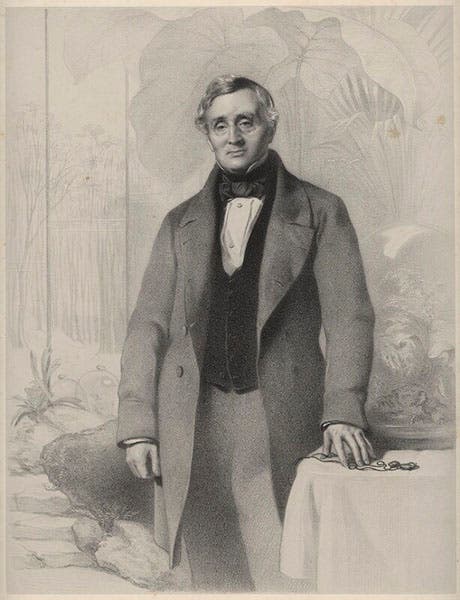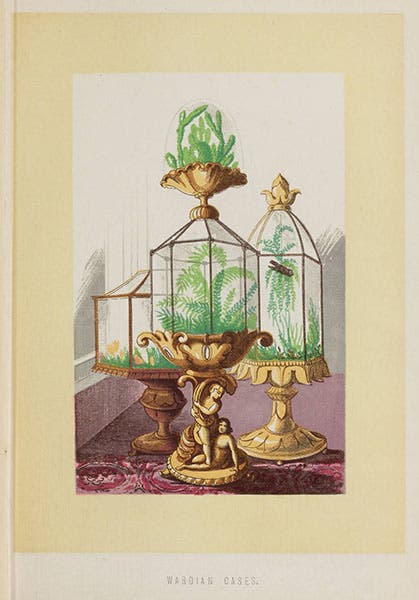Scientist of the Day - Nathaniel Bagshaw Ward
Nathaniel Bagshaw Ward, an English physician and collector, died June 4, 1868, at age 77; his date of birth is unknown. In 1830, Ward accidentally discovered that plants, especially ferns, happily grow and flourish in glass boxes that are almost airtight (or, as he called them, “closely glazed”). Up to that point, ferns had resisted indoor culture, especially in the dirty air of London.
In 1833, a friend of Ward took a battery of Ward’s glass boxes to Australia on a plant collecting expedition, and he found that 95% of his specimens survived the trip back home; without the “Wardian cases,” the survival rate was typically 5%. Ward wrote several papers about his discovery, and then in 1842, a small book: On the Growth of Plants in Closely Glazed Cases. With that, Wardian-case culture took off.
Soon every Victorian parlor had a Wardian case, now usually called a terrarium, and the fern population of England began to suffer from the predations of thousands of collectors. In the 1850s, someone got the bright idea of turning the terrarium upside down and filling it with water, yielding the aquarium, and tidal sea anemones began to suffer the same fate as the ferns. Nicely, Ward lived to see all this happen, and he did not attempt to make a penny off of his invention, which he willingly shared with the public. If you have either a terrarium or aquarium in your home, you owe Ward a small nod of thanks.
We have a copy of his little book in the History of Science Collection, which is (strangely) unillustrated. Fortunately, we also have a copy of J. R. Mollison, The New Practical Window Gardener (1877), which has several images of Wardian cases, one in color, which we have happily drawn on for this post (first, fourth, and fifth images).
Although the cover of Mollison’s book shows a window box, not a Wardian case, we couldn’t resist showing it here, as a beautiful example of a Victorian decorative book cover (sixth image).
The portrait of Ward (second image) is a lithograph made by Richard James Lane in 1859; it is in the National Portrait Gallery, London. Dr. William B. Ashworth, Jr., Consultant for the History of Science, Linda Hall Library and Associate Professor, Department of History, University of Missouri-Kansas City. Comments or corrections are welcome; please direct to ashworthw@umkc.edu.











